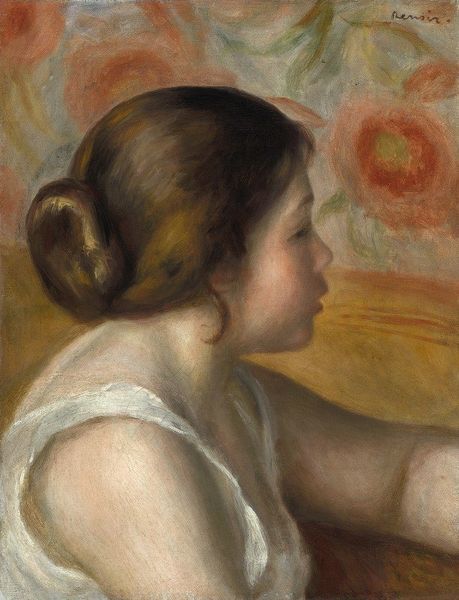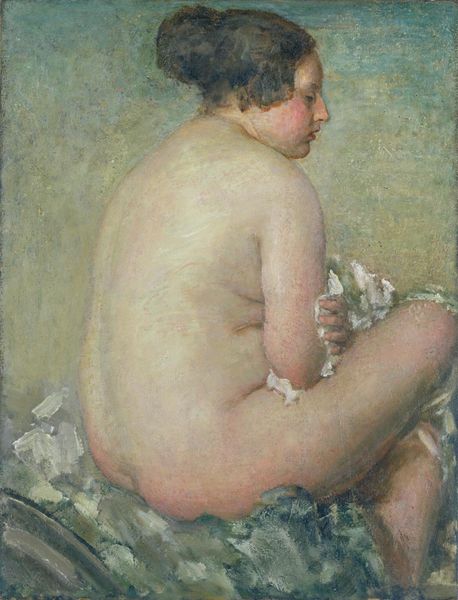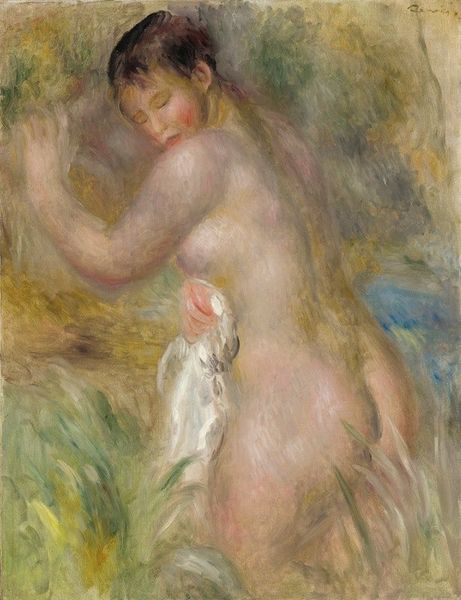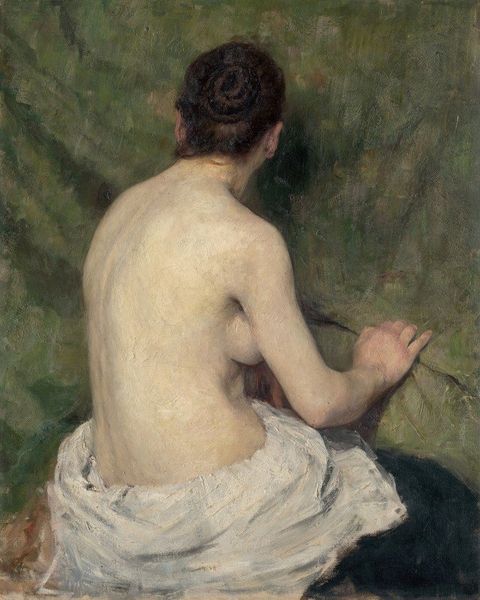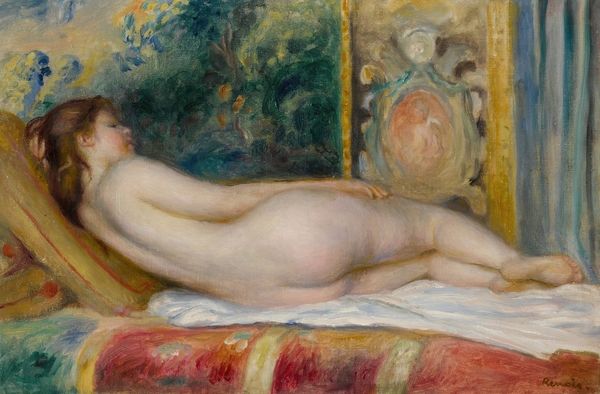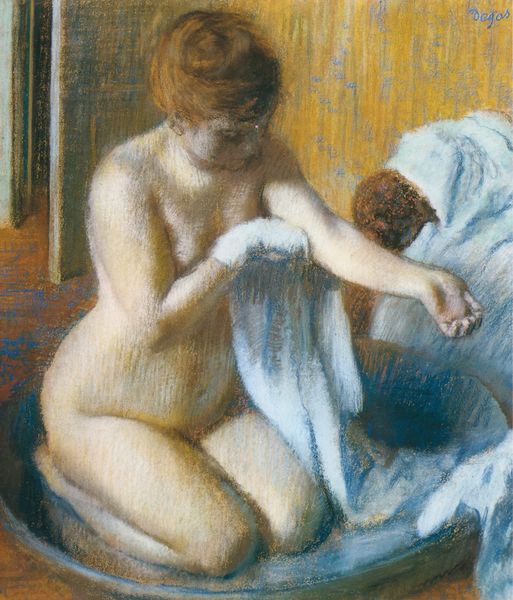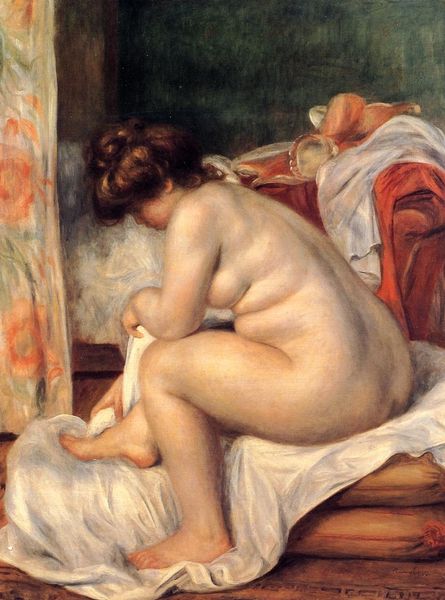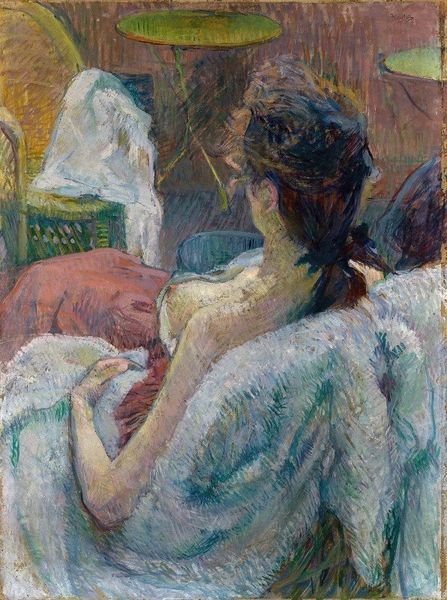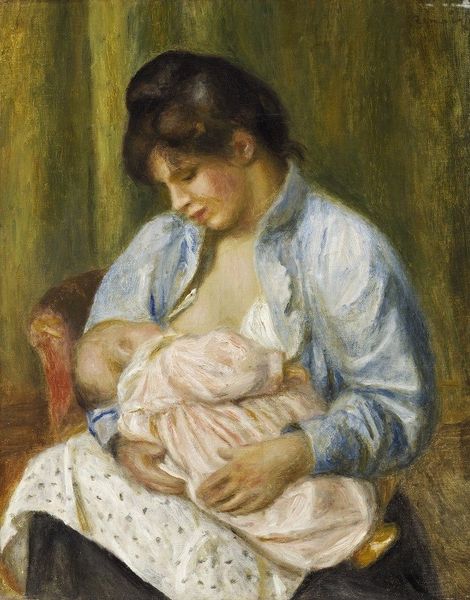
#
figurative
#
oil painting
#
portrait reference
#
acrylic on canvas
#
portrait head and shoulder
#
animal drawing portrait
#
portrait drawing
#
facial portrait
#
portrait art
#
fine art portrait
#
digital portrait
Copyright: Public Domain: Artvee
Editor: Here we have Renoir’s "Dark-Haired Woman" from 1903, painted with oil on canvas. There’s something very intimate and immediate about the way the brushstrokes render her skin. What do you see when you look at it? Curator: I see a very self-conscious display of artistic labor and material conditions. This wasn't simply about representing a woman, but about flaunting the physical properties of oil paint itself and Renoir’s access to the means of pictorial production. Look at how the strokes almost seem separate from the figure, foregrounding the process of creation over faithful representation. Don't you agree? Editor: I see your point about the visibility of the brushwork. But I still think it conveys a certain mood… like dreamy reverie. Is it fair to divorce that emotional element from the material? Curator: Can we truly separate them? The 'dreamy reverie' you perceive isn't inherent; it's conjured through very specific material applications, the soft gradations and diffusion achieved only with the paint, tools, and skilled labor readily available within the social economy of his time. It’s all constructed. Think about who had access to that level of material production and how that informs our reading of the artwork. Editor: That's an interesting way to think about it. So, rather than focusing on the woman's emotions, we should consider how Renoir's access to materials and labor shapes our emotional response? Curator: Exactly! The material conditions under which the artwork was created are intrinsic to its meaning, even the feelings it evokes. Editor: I never considered the impact of those specific social and material conditions that explicitly. Thanks, that was super enlightening.
Comments
No comments
Be the first to comment and join the conversation on the ultimate creative platform.
